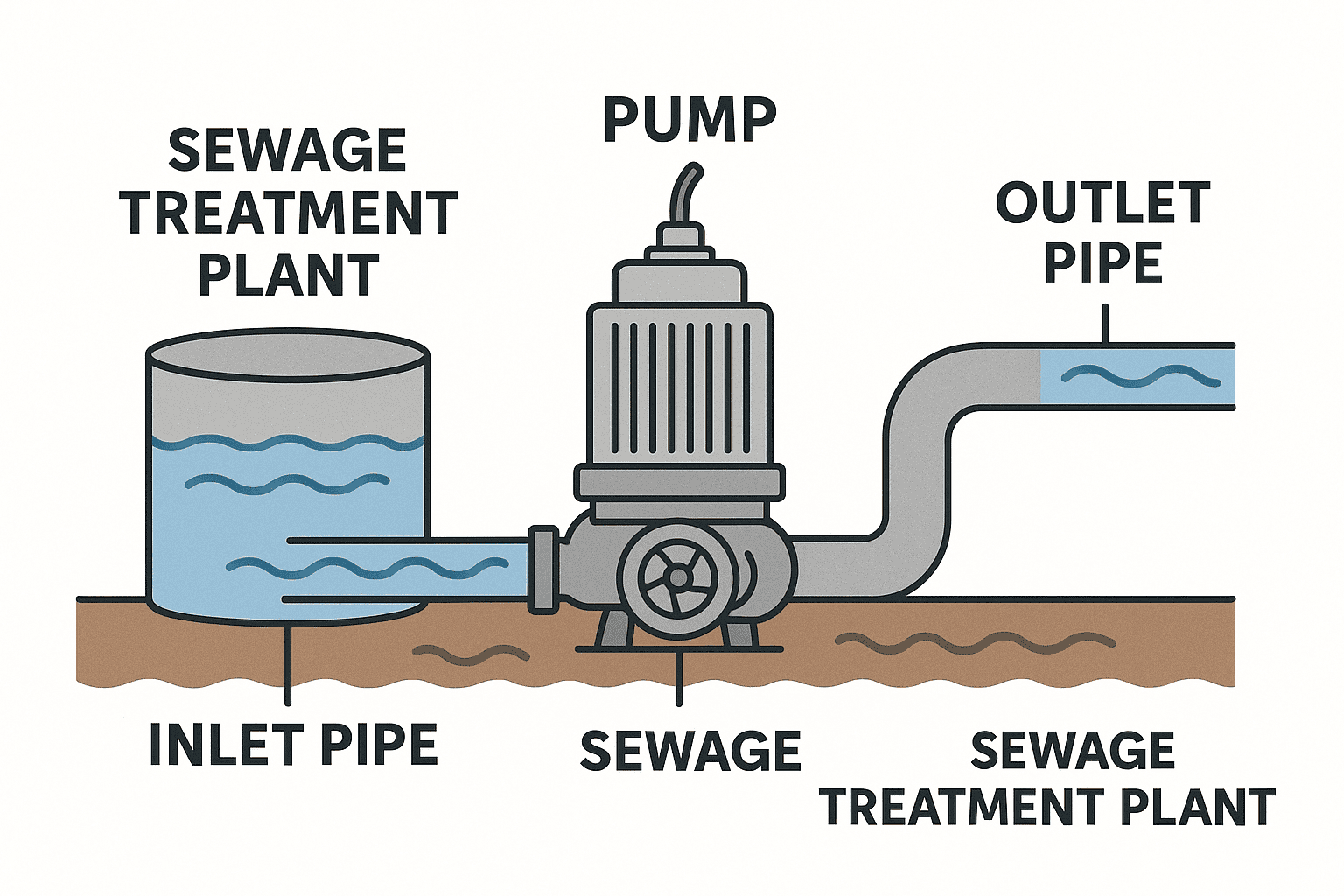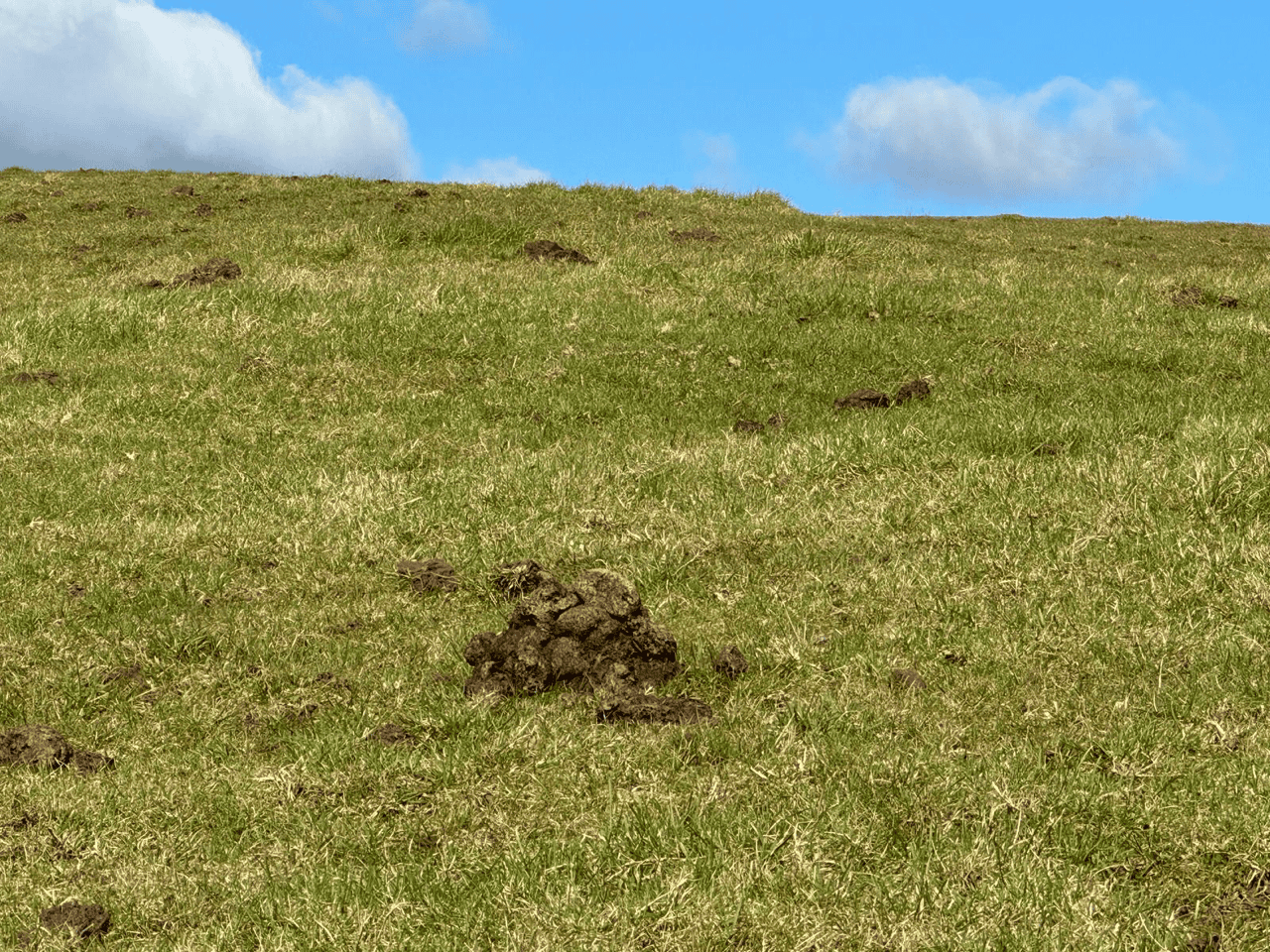Mole ploughing is a method of deep tillage used in agriculture to break up compacted soil and improve drainage. It involves the use of a machine called a mole plough, which creates a vertical channel or “mole” in the soil by pushing a blade through the earth.
The process of mole ploughing typically involves the following steps:
- Preparation: Before starting the mole ploughing process, the field is usually ploughed or disked to remove any surface debris and loosen the topsoil.
- Equipment Setup: The mole plough is attached to a tractor and adjusted to the desired depth and angle of operation.
- Soil Penetration: The mole plough blade is then lowered into the soil and pulled through the earth by the tractor. As the blade moves through the soil, it creates a vertical channel or mole that can be up to 1m deep.
- Soil Fracturing: As the mole plough moves through the soil, it fractures and loosens the soil around the channel, creating pockets of air and allowing for better water penetration and drainage.
- Incorporation: Some mole ploughs are equipped with a device that can add organic matter, such as compost or manure, to the channel as it is being created. This helps to improve soil fertility and structure.
- Soil Closure: Once the mole plough has created the channel, the soil is allowed to settle and the channel is gradually closed by the surrounding soil.
Mole ploughing is an effective method for improving soil structure and reducing compaction, which can lead to increased crop yields and improved soil health over time. However, it should be used with caution, as excessive deep tillage can also disrupt soil ecosystems and lead to soil erosion.
How to mole plough for optimum benefits. Mole drainage, when completed correctly on the right type of soil type can assist in reducing problems of waterlogging To help farmers get the most from the process there is a need for farmers to understand how to mole plough and construct effective mole drains.
Wet winter soils are a common problem in parts of the United kingdom and surface drainage has potential to improve the situation by removing excess surface water. For greatest impact the profile of the soil profile needs to be drained so that crops and pastures have the capability to reach their potential and stock damage through compaction and treading can be reduced.
Mole drainage is widely used on heavy soils to improve productivity of pastures and crops in this article we consider How To Mole Plough

How To Mole Plough
What is a mole drain?
In there simplest form mole drains are unlined channels formed in a clay subsoil. They are created by a ripper blade with a cylindrical foot, often featuring an expander which helps compact the channel wall. Mole drains are most often used when the natural drainage of the land needs improving due to
- Lack of slope – the degree of slop is complex and beyond the scop of this article
- A heavy clay subsoil which prevents natural downward drainage
- Mole drains are more sophisticated than open drains.
- Importantly mole drains do not drain away groundwater but only surface water that enters from above.
Mole Plough – Most appropriate soils for mole ploughing
- For mole ploughing to be effective soils should have a minimum of thirty five percent for optimum results. The clay mix gives the soil the ability to stay together and minimise the chance of collapse once the mole is pulled.
- Sand content should be less than thirty percent.
- It is best if the soil should is free of stones specifically at the mole drain depth.
Simple test to evaluate suitability for mole draining
There are two simple tests that can be conducted to establish if a soil is suitable for mole drainage:
- Roll out a pencil thick rod and try to form a forty to fifty mm diameter circle at the mole draining depth. If this can be completed without crackling or crumbling the soil might be suitable for mole draining.
- An alternative test is to find out if the soil at mole drain depth will slake or disperse.
- Take some soil and create some golf ball size balls that can be placed in a jar of distilled water or rain water. Over a couple of days keep a visual check on the water. Cloudy water indicates a dispersive soil which are susceptible to tunnel erosion and therefore should not be mole drained.
- If the soil ball falls apart quickly then it is has a tendency to slake, this is good as these soils may be successfully gravel mole drained (actually a gravel slot) albeit expensively.
For more information on websites that demonstrate how to mole plough click here or for information on marketing click here
If you sell mole ploughs and need to improve your website or digital marketing check out our online portfolio
Advantages of using a mole plough
There are several advantages of using a mole plough in agricultural practices. Some of the key benefits are:
- Improved Soil Drainage: Mole ploughing creates vertical channels in the soil, which allows water to drain more effectively. This helps to reduce the risk of waterlogging and soil erosion, and can improve soil quality by reducing compaction.
- Enhanced Root Growth: The loosened soil created by mole ploughing provides better conditions for root growth, which can increase the productivity and health of crops.
- Increased Soil Fertility: By incorporating organic matter such as compost or manure into the soil during mole ploughing, farmers can improve soil fertility and reduce the need for synthetic fertilizers.
- Time and Labor Savings: Mole ploughing can be a more efficient and cost-effective method of tillage compared to other methods, such as traditional ploughing or deep ripping. It can save time and labor costs, particularly when used with larger farming operations.
- Reduced Soil Compaction: Mole ploughing helps to break up compacted soil layers, which can increase soil porosity and reduce the amount of force needed to penetrate the soil.
Overall, the use of mole ploughing can have significant benefits for crop productivity, soil health, and sustainability, particularly in areas where soil compaction is a concern.
Disadvantages of using a mole plough
While mole ploughing offers several advantages, there are also some potential disadvantages that farmers should consider before implementing this method. These include:
- Soil Disturbance: Mole ploughing can cause significant soil disturbance, which can disrupt soil structure and impact soil health. Overuse of mole ploughing can lead to the destruction of soil ecosystems, including beneficial microorganisms, earthworms, and other organisms that play important roles in soil health.
- Risk of Soil Erosion: The creation of vertical channels through mole ploughing can increase the risk of soil erosion, particularly in areas with steep slopes or heavy rainfall. Farmers may need to take additional measures to mitigate this risk, such as using cover crops or implementing conservation tillage practices.
- Cost: Mole ploughs can be expensive to purchase or rent, and may require specialized equipment or skills to operate effectively. Farmers may need to weigh the costs and benefits of mole ploughing carefully before deciding to use this method.
- Depth Limitations: Mole ploughs may be limited in the depth to which they can penetrate the soil. While they can be effective at breaking up compacted soil layers close to the surface, they may not be effective at deeper tillage.
- Potential for Crop Damage: Depending on the size and weight of the mole plough and the type of soil, mole ploughing may cause damage to crops or plant roots. Farmers may need to take precautions to avoid damage to crops during the mole ploughing process.
In summary, while mole ploughing can be an effective method for improving soil structure and reducing compaction, it is important for farmers to consider the potential disadvantages and weigh the costs and benefits before implementing this method. Proper soil management and conservation practices should also be used to mitigate any potential negative impacts.



